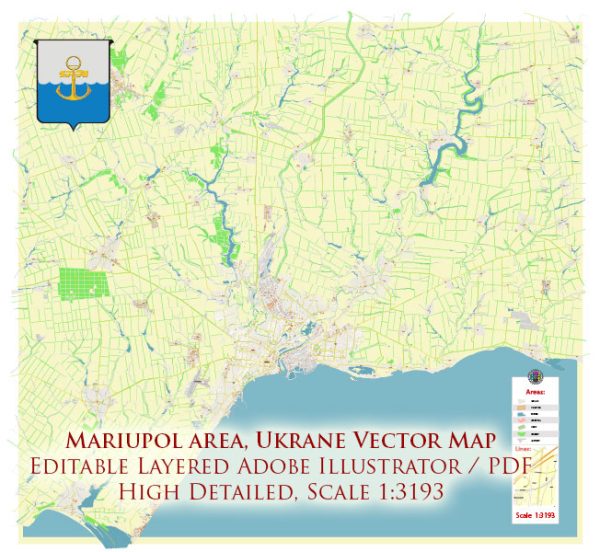Mariupol is a city in southeastern Ukraine, situated on the northern coast of the Sea of Azov. Its history of urban development is characterized by a mix of industrialization, cultural influences, and strategic importance. Here’s an overview of Mariupol’s history:
- Foundation and Early History (18th Century): Mariupol was founded in 1778 as a fortress named Pavlovsk by the Russian Empress Catherine the Great. It was established to protect the southern borders of the Russian Empire from the Ottoman Empire and other potential invaders.
- Industrialization (19th Century): In the 19th century, Mariupol experienced rapid industrialization, becoming a major center for steel production and shipbuilding. The city’s growth was closely tied to the development of the metallurgical and coal industries. The establishment of steel plants contributed significantly to Mariupol’s economic importance.
- Soviet Era (20th Century): During the Soviet era, Mariupol continued to play a crucial role in heavy industry. The city became an essential part of the Soviet Union’s industrial complex, producing steel, machinery, and other goods. The population increased as workers migrated to the city for employment opportunities in the industrial sector.
- World War II: Mariupol suffered significant damage during World War II, as it was occupied by German forces. The city was later liberated by the Soviet Army, but the war left a lasting impact on its infrastructure.
- Post-Soviet Period (1991 Onward): With the dissolution of the Soviet Union in 1991, Mariupol became part of independent Ukraine. The city faced economic challenges as it transitioned from a centrally planned economy to a market-oriented one. Despite these challenges, Mariupol retained its industrial character, and efforts were made to diversify the local economy.
- Modern Development: In recent years, Mariupol has faced geopolitical tensions, particularly in the context of the conflict between Ukraine and Russia. The city has been a focal point in the conflict, and its development has been influenced by these geopolitical factors.
- Cultural and Educational Institutions: Mariupol is not only an industrial center but also home to various cultural and educational institutions. It has theaters, museums, and universities contributing to the cultural and intellectual life of the city.
Despite the challenges and geopolitical issues, Mariupol continues to be an important industrial and cultural hub in Ukraine, and its history reflects the broader economic and political changes that have shaped the region.


 Author: Kirill Shrayber, Ph.D.
Author: Kirill Shrayber, Ph.D.